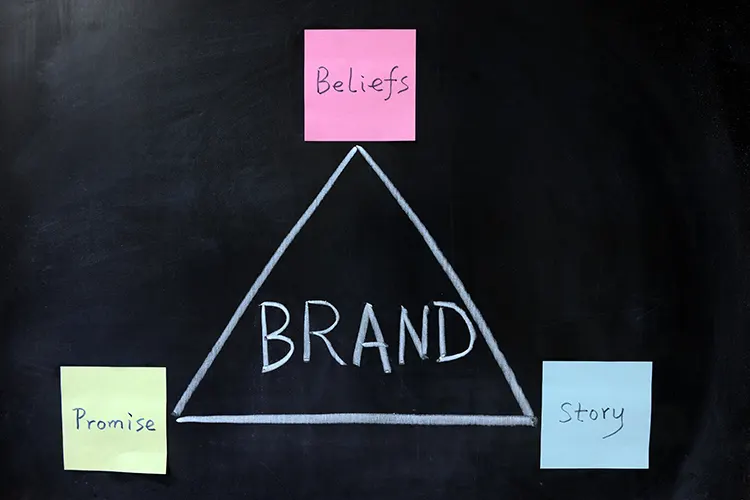Branding
The Heart And Soul Of A Business.“Branding is arguably the most overused term in marketing today!
While it's trendy to talk about it, few people truly understand what it means.”
Branding is the attempt to create a unique image for a company, product, or service in the consumers' minds through marketing campaigns with a consistent theme and core messaging. The branding process tries to establish a significant, meaningful, and differentiated presence in the marketplace that attracts and retains customers.
Simply put, your brand is your promise to your customer;
it is what you stand for as a company.
You can’t be all things to all people! Are you a luxury brand or a discount brand? Are you the most experienced or the innovative startup? Your brand will determine who you target as customers and the core messaging you use to target them.

Your company logo is the foundation of your brand. Your website, brochures, promotional materials, product packaging, business cards, letterhead, etc., all work to communicate your brand to your target customers. Part of developing a Brand Strategy includes creating a Tagline, a memorable, meaningful, and concise statement that captures the essence of your brand. This Tagline accompanies your logo and quickly summarizes your brand and its first impression to potential customers.
Fun Fact
The average supermarket alone has over 40,000 different brands.
The average college graduate has a vocabulary of just 8,000 words.
Every Brand Strategy should also include a positioning statement. A positioning statement should be one (or no more than two) sentences and answer these questions:
- Who you are.
- What you do.
- Who you do it for.
- Why anyone should care (or why you are different).
Every word counts! Your positioning statement becomes the answer every employee tells someone when asked, “What does your company do?” People often refer to this as your elevator pitch, and it should be front and center on the homepage of your website. Remember, people don't read websites, they browse them. Make it impossible for anyone to miss your positioning statement on your website.
“Marketing Is All About Perception; Reality Doesn’t Matter.”
Once Your Brand Has Created A Perception In The Mind Of A Consumer, It Is Difficult (If Not Impossible) to Change. Many companies have spent millions of dollars learning how expensive it is to attempt to change a person's perception, and almost all have failed.
Take BMW, for example… For years, they were known as “The Ultimate Driving Machine,” and then suddenly, they became “Joy.” This change was an attempt to entice a higher percentage of female audiences. While joy sounds simple, apparently, no one (myself included) knew what the heck it stood for, or why I should now buy a BMW. This change didn’t resonate with any part of BMW’s target audience and confused people instead. So, a couple of years and tens of millions of dollars later, BMW is back to being “The Ultimate Driving Machine” once again.
The Number One Reason Small Businesses Don’t Create A Proper Brand.
Let’s think about how much extra money a typical small business has available to invest in branding? Minimal, almost none in most cases. Let’s also consider the perceived risk involved in attempting to tinker with, and create a more compelling brand. After pondering the BMW calamity, most people would say pretty high risk. And finally, let’s debate the urgency to invest the required time and effort to develop a brand when there seem to be other, more critical, and lower risk tasks all competing for these same resources.
That’s precisely the problem. Most people remember countless examples similar to the BMW disaster and believe that branding is a costly, very time-consuming, and very high-risk project. Indeed not an indulgence that a typical small business can justify.
However, establishing a brand is critical to your small business success; here’s why. When first introduced to your company, your consumer expects to learn about you. At this point, your brand must be: very well thought out, polished and prominent.
Remember, people buy from you because of “why you are different” from your competitors, not for all the reasons you’re the same as them. And they buy because of “what you stand for as a company.” If you haven’t formalized this content and made it easy to digest and remember, your potential consumer will move on to a competitor who has. For this reason, branding should be part of every small business’s marketing agenda.
The Biggest Difference Between Large And Small Business Branding.
Large corporations armed with huge budgets perform marketing campaigns “to keep their brand top-of-mind in their consumer.” While this type of branding works well for corporations such as Coca Cola and other giant-sized companies, small businesses with limited budgets can’t afford to copy this model.
Small businesses are typically strapped for marketing funds, and cannot afford to implement ANY marketing campaign that doesn’t generate sales leads. Staying top-of-mind (like Coca Cola) is extremely expensive and only required in small businesses when you have extended sales cycles. Small businesses typically can’t afford this luxury, and will never gain the brand recognition that justifies the expense. So, unless you have a longer than typical sales cycle, every marketing activity that a small business performs should create instantaneous sales activity, or you should remove it from your marketing plan.
Curious about how we can help you with your Branding challenges, why not give us a call to discuss your situation, and how we might be able to help?
Let's Talk
